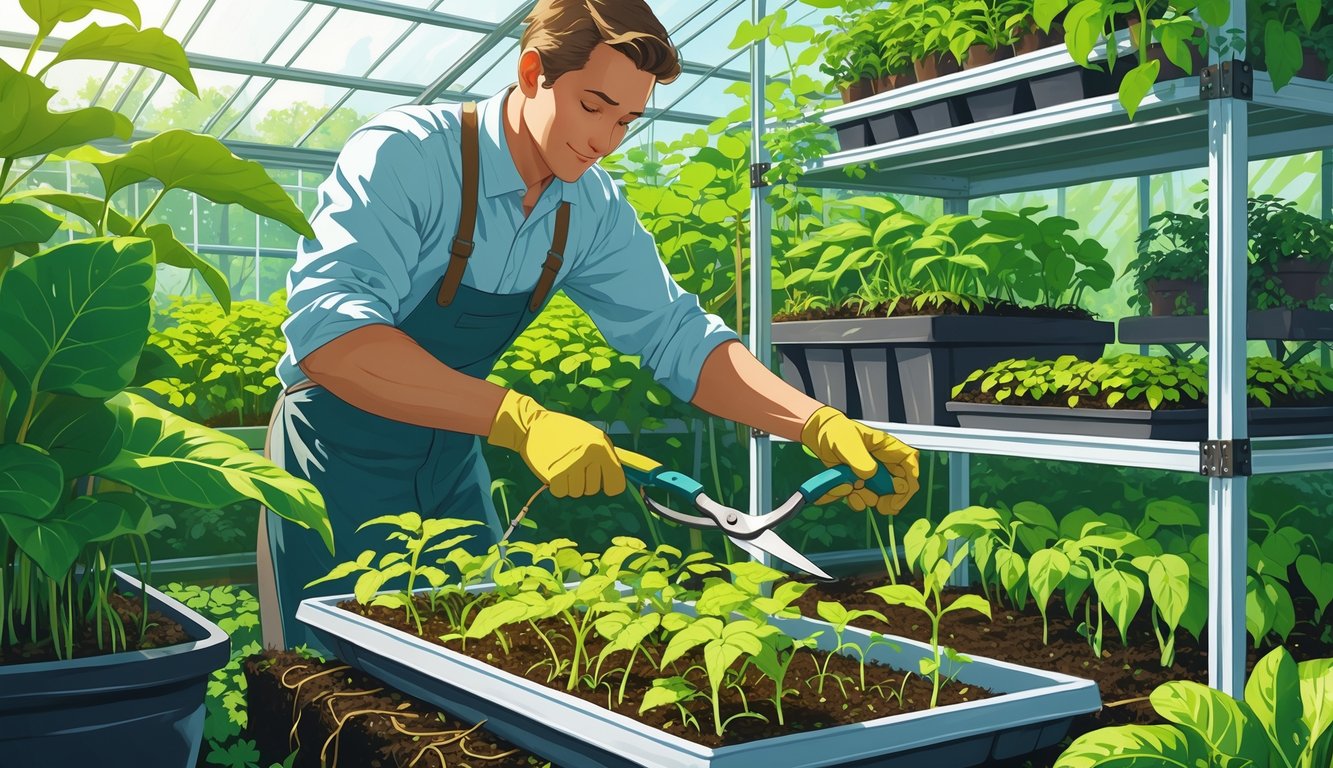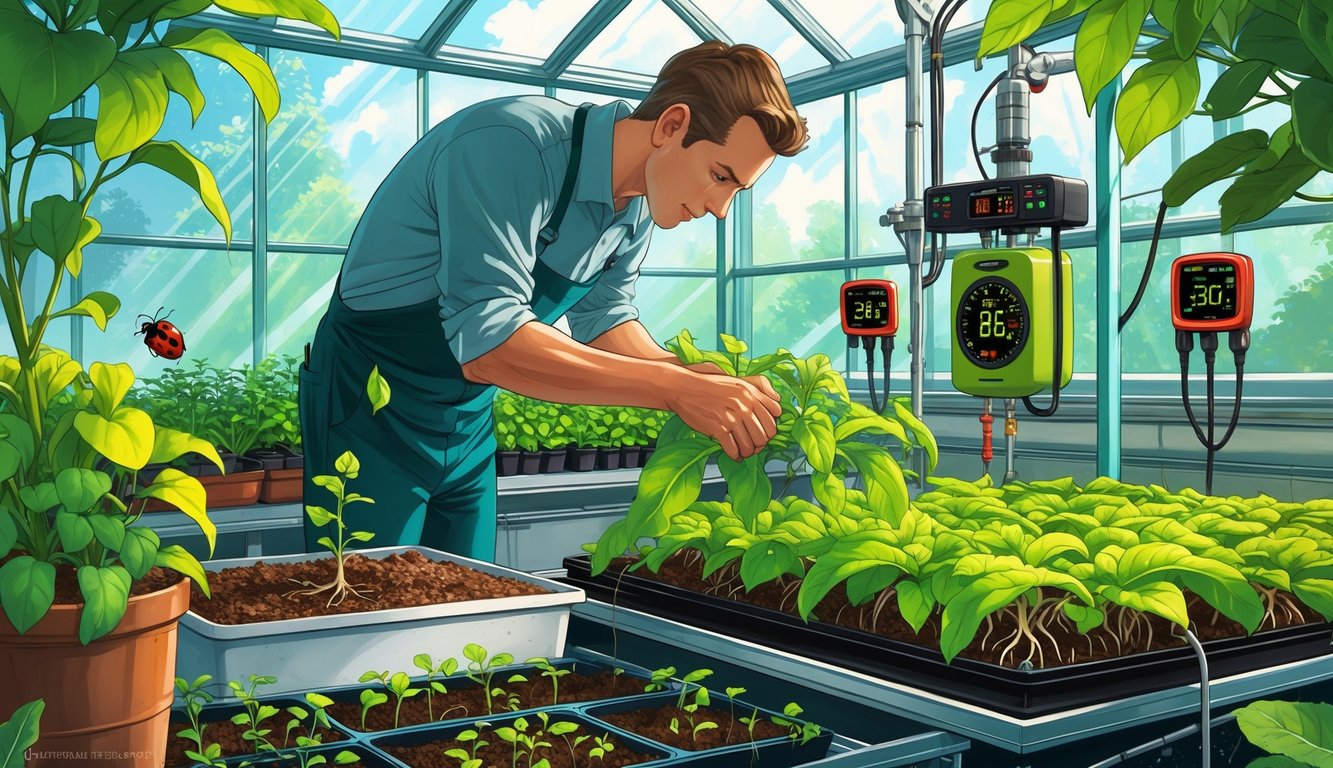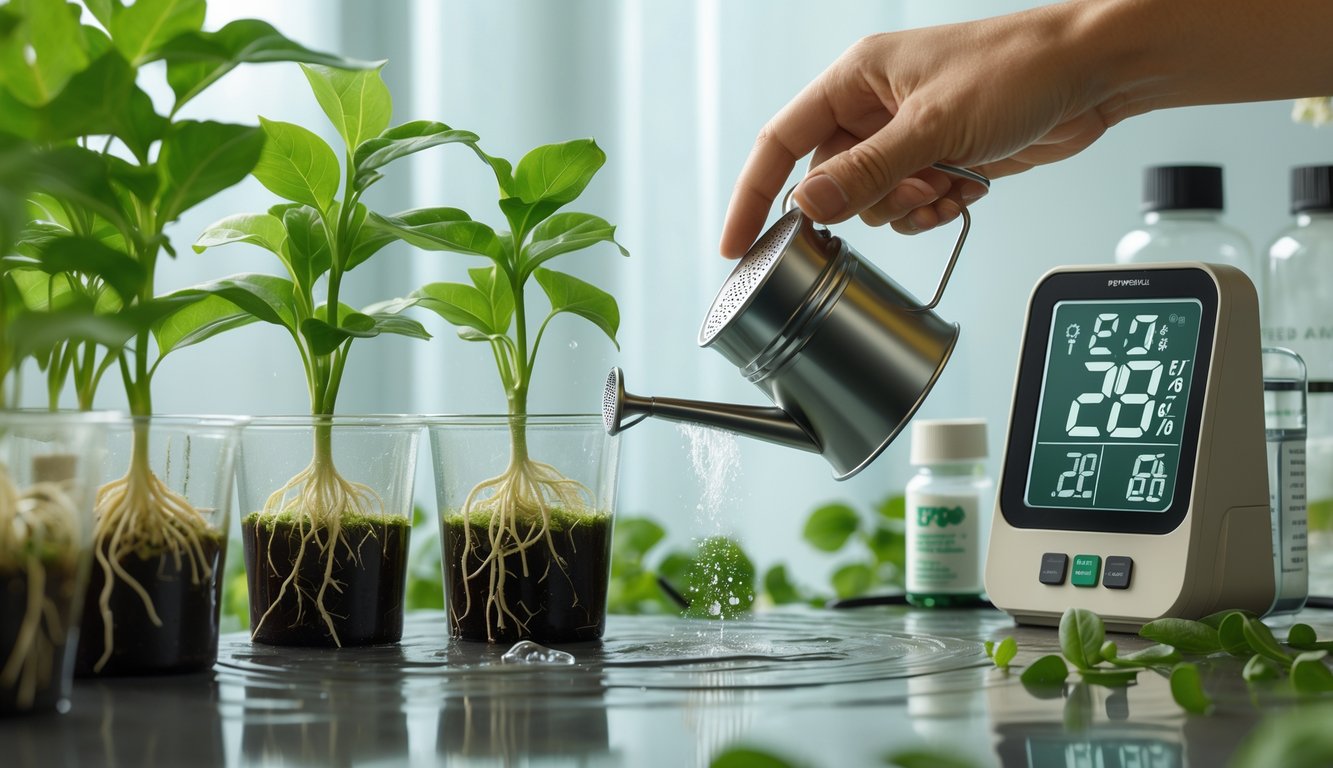
Optimizing Environmental Conditions

Think you’ve got it all figured out, then your seedlings melt overnight. Temperature swings, humidity drops—total carnage. I’ve trashed more “fail-proof” humidity domes than I care to admit. Some folks get away with tap water and a cracked window, but the ones pulling 90% germination? They obsess over every little variable.
Managing Temperature and Humidity
Perfect numbers? Good luck. I stick a $10 thermometer/hygrometer near my cuttings, check it compulsively, and laugh at my old “room temp is fine” days. UC Davis agronomists (2023) say 70-75°F and 80%+ humidity boosts rooting. If I miss that, roots stall, leaves curl, everything pouts.
Heat mats in summer? Disaster. Everything cooks, trays warp. Humidity domes only work if you vent them daily; sealed up, they rot everything. Dry basement? I chunk trays together and mist three times a day—tedious, but Cornell’s guide says “moist, not soggy, is non-negotiable.” Some species, one dry night, and you’re back to zero. It’s brutal.
Light and Airflow for Healthier Yields
LEDs are everywhere, but honestly, even $30 shop lights beat a cloudy windowsill. “Indirect sunlight” in winter? Forget it. I run 16 hours of broad-spectrum (5,000K–6,500K) and it matters. One season in, I realized cheap fans are the difference between healthy cuttings and a mushy graveyard. Airflow isn’t optional.
Humidity domes raise humidity, sure, but the vents matter more than the dome. Strong airflow plus any decent light—double the roots, says Ohio State (2021). I prop domes with chopsticks, whatever’s handy. If you ignore airflow, mold wins. Plants don’t care about brands. I’ve outperformed neighbors using kitchen fans and cheap LEDs instead of overpriced kits—proof’s in my trays, not the receipts.
Watering and Moisture Control Tips

Even with perfect cuttings and some magic peat-perlite mix, if you mess up watering, it’s game over. Soggy stems, dead roots—you lose half your crop before you even realize it. Timing, technique, misting—gadgets everywhere, but most are pointless. Overwater and disease explodes, underwater and roots sulk.
Effective Watering Techniques
Nobody likes lugging watering cans, but skipping precise watering is a death wish. Horticulture Research Institute (2023) says up to 50% of your irrigation just evaporates. I’ve drowned more cuttings with “just a splash more” than I’d admit. Self-watering trays? Gnats move in faster than the roots.
Some people use those $10–$20 moisture probes. I just poke a finger in—if it’s clammy an inch down, I stop. Roots want air and water, not a swamp. I shoot for consistently moist, not soaked. No universal rule, but if fat pencil roots shoot out the bottom (thanks, GrowerTalks), it’s too wet. Skinny white roots? That’s what I’m after.
Using Misting Systems
So, misting systems. Not the “set it and forget it” fantasy every catalog seems to promise, which—yeah, I fell for once. On my propagation benches, I hacked together some cheap timer with micro-misters (Rain Bird kit, Home Depot, box says 0.5 GPH, but honestly, does anyone actually measure that?). I keep fiddling with it—if the leaves dry out, humidity drops, but if I run it too long, everything’s soggy and gross. Right now, I’m blasting short bursts every 15 minutes or so, only while the sun’s up, but who knows if that’s perfect.
People still parrot the idea that hand-misting is “gentler” for seedlings. Sure, maybe, but have fun with that carpal tunnel by mid-June. Misting does help with humidity, keeps the little guys from wilting, maybe even helps with transplant shock—assuming you actually clean your nozzles, which, let’s be honest, most of us forget. Some greenhouse guy at a conference swore nozzle gunk ruins rooting rates. He had charts. I pretended to care.
Preventing Overwatering and Disease
You want to know what’s soul-crushing? Watching weeks-old trays just collapse overnight because some fungus snuck in after one sloppy irrigation cycle. Extension office horticulturist once told me, “If your medium wrings out like a sponge, toss it.” I get it now. Too much water isn’t just slow growth—it’s basically an invitation for root rot and fungus gnats, especially in those plastic humidity domes.
But what does “moist, not soggy” even mean? It’s a moving target—tomatoes like it one way, lavender wants the opposite. I use a dirt-cheap Govee humidity sensor from Amazon to keep an eye on things. If humidity’s pegged at 99% constantly, I know I’m flirting with disaster. I don’t mess with fungicides unless I’m desperate; sometimes I just dump the tray, bleach everything, and start over. Still miss stuff, though. Always.
Soil Nutrition and Fertilization
I want to ignore all the fertilizer advice out there, but I can’t, because nutrient screwups destroy my cuttings before I even get a photo. Nitrogen burn, crispy tips, stunted roots—usually not the lights, it’s what I dumped in the tray. Fertilizer, compost, pH, all that. It messes with my results way more than the weather ever does.
Choosing the Right Fertilizers
Some folks swear by slow-release pellets or fancy synthetics, but I keep circling back to a basic 20-10-20 water-soluble (200 ppm N, if you’re counting—Greenhouse Product News says that’s “standard” for propagation, whatever that means). It keeps phosphorus from building up and gets roots going fast. Not a universal fix, though. If my cuttings show up pale, I’ll do a weak liquid feed through the mist system. I vaguely remember a Cornell researcher calling foliar feeding “niche”—I guess it only helps if your plants are already struggling.
Nobody talks about how slow organic blends are to break down. If you’re running a commercial setup, calcium nitrate just works faster. On the flip side, too much soluble stuff burns tips, especially on fussy things like hydrangea, so then I’m flushing trays instead of potting up. There’s no magic bullet. Just know your plants and adjust on the fly.